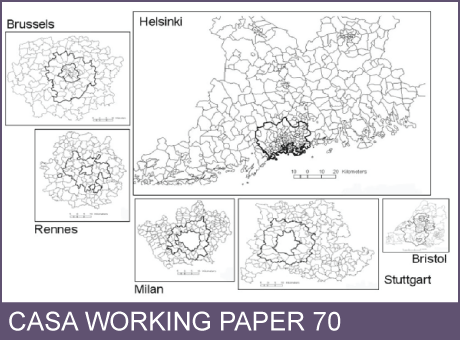CASA Working Paper 70

1 November 2003
Traffic, Urban Growth and Suburban Sprawl
Populations are barely reproducing themselves and migration from the countryside to the town has slowed to a trickle, the demand for more living space shows no sign of abating as cities continue to expand their borders through suburban sprawl. The automobile, of course, makes this possible but we show no signs of moving to other forms of transport that might enable our cities to become a little more compact. The problems of sprawl are pervasive. Besides congestion, time wasted, and the long term costs of using non-renewable energy, the lack of good social infrastructure in rapidly growing suburban areas together with the erosion of agricultural land, often of high environmental quality, has focused the debate on whether or not such forms of development are sustainable.
In this paper, we begin by noting that suburban sprawl is an age-old phenomenon which represents a fine balance between the forces that are pushing people together in cities and those that are forcing them out. These lead to different types of sprawl in different places and at different times but whatever the variety, there are costs to be borne. We briefly review these, noting how these affect suburban sprawl in Europe, and the efforts of the European Commission to understand the problem. We conclude not with a plea that cities should be compacted and all automobile traffic removed but that we should engage in policies for 'smart growth' such as those being adopted in North America.
This working paper is available as a PDF. The file size is 1MB.
Authors: Michael Batty, Nancy Chin, Elena Besussi
Publication Date: 1/11/2003
 Close
Close

